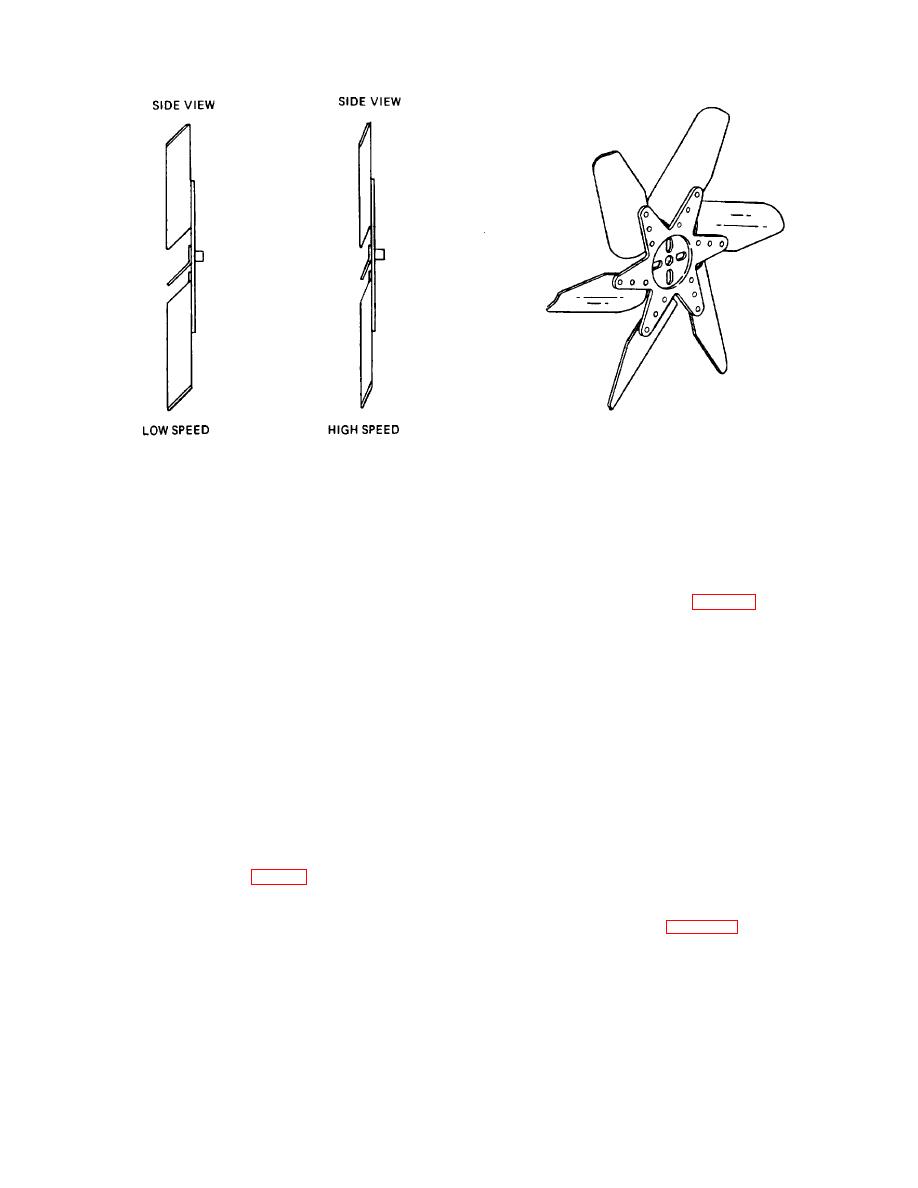
| Tweet |

Custom Search
|
|

|
||
 TM 9-8000
Figure 9-6. Variable Pitch Fan
The bellows pull the valve open as they expand, allowing
9-9. Thermostats.
coolant to circulate. The bellows-type thermostat is little
used in modern equipment because it is sensitive to the
a. Purpose. The water pump starts the coolant
pressure around it, making it inaccurate in modern
circulating through the system as soon as the engine is
pressurized cooling systems.
started, no matter how low the temperature. Therefore, it
is necessary to install a thermostat to ensure quick
(2) The pellet type (fig. 9-8), which is the
warmup and prevent overcooling in cold weather. A
currently used thermostat because its accuracy is
thermostat regulates engine temperature by controlling
unaffected by modern pressurized cooling systems. The
automatically the amount of coolant flowing from the
thermostat consists of a valve that is operated by a
engine block to the radiator core.
piston or a steel pin that fits into a small case containing
a copper impregnated wax pellet. When the engine is
b. Operation. The thermostat is merely a heat-
cold, the wax pellet is contracted and the spring pushes
operated unit that controls a valve between the engine
the valve closed. The wax pellet expands as the engine
block and the radiator. It usually is located in series with
heats up, pushing the valve open against the force of the
the engine coolant outlet in a casing called the
spring.
The pellet-type thermostat will maintain a
thermostat housing. The thermostat, by design, is made
constant temperature by varying the size of the valve
so that if it fails, it will be in the opened position so as to
opening.
allow the free circulation of coolant through the engine.
d.
Thermostat Heat Ranges.
A variety of
c. Configurations.
The two configurations of the
thermostats are available that allow the coolant to
thermostat are:
operate at different temperatures. The standard heat
ranges available are from 160F (71C) to 210F (99.8
(1) The bellows type (fig. 9-7), which consists of
C).
a flexible metal bellows attached to a valve. The
bellows, which is sealed and expandable, is filled with a
e. Coolant Bypass (Fig. 9-9). The engine is
highly volatile liquid such as ether. The bellows chamber
designed so that the water pump will circulate coolant
is contracted when the coolant is cold, holding the valve
within the water jackets whenever the thermostat is
closed. The liquid in the bellows vaporizes as the
closed. This is important to keep pistons and valves
coolant is heated, causing the bellows to expand.
from overheating even though the engine is below
operating temperature.
TA233496
9-6
|
||
 |
||